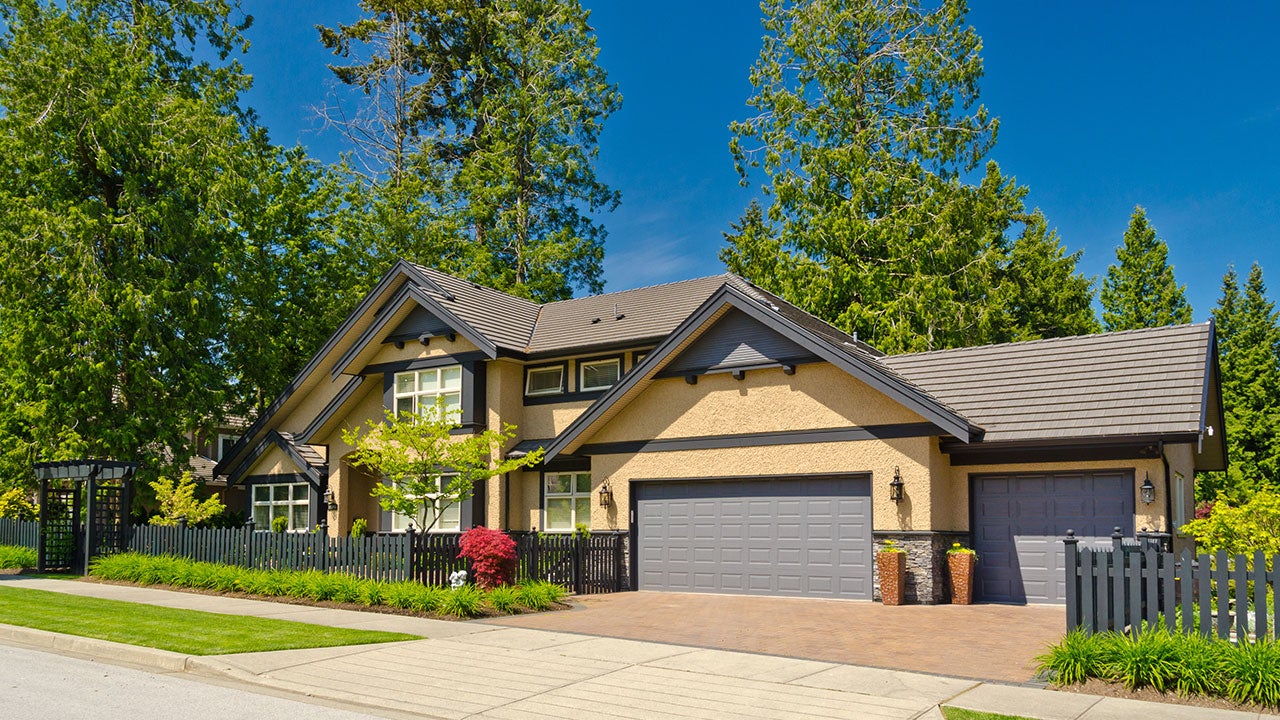Types of mortgage refinance: How to choose




Key takeaways
- There are several types of mortgage refinance options, including rate-and-term and cash-out refinancing. The most common, rate-and-term, involves replacing your current mortgage with a new loan with a different interest rate, loan term or both.
- Some types of mortgages offer the option of a streamline refinance, which doesn't require in-depth underwriting or an appraisal.
- The best refinance option for you depends on your goals. If you simply want to get a lower rate, a rate-and-term or streamline refinance could work well for you.
Refinancing your mortgage — and choosing which type of refinance to do — is a major decision. Here’s a guide to the many ways you can refinance your mortgage, and tips to decide which is best for you.
Types of mortgage refinance
There are many mortgage refinancing options, including:
- Rate-and-term refinance: Rate-and-term is a refinance option that swaps your current mortgage for a new loan with a new interest rate and/or repayment term.
- Cash-out refinance: In a cash-out refinance, you’ll switch to a new, bigger loan that taps your home’s equity for additional cash. You can use these funds for any purpose.
- Cash-in refinance: A cash-in involves making a lump-sum payment when you refinance to a new mortgage, bringing down the balance on the new loan.
- Streamline refinance: Available with an FHA, VA or USDA loan, a streamline refinance provides a faster route to a new mortgage, with less paperwork and underwriting.
- No-closing cost refinance: A no-closing cost refinance is any type of refinance that doesn’t require you to pay closing costs on closing day. Instead, you’ll bundle these fees into the new loan.
- Short refinance: Similar to the short sale of a home, this is an option for underwater mortgages. In this case, the lender might agree to refinance the loan to match the home’s current market value instead of what the borrower originally owed.
- Reverse mortgage: A reverse mortgage isn’t a refinance in the traditional sense. It allows homeowners aged 62 and older (sometimes 55 and older) to turn their equity into income.
Rate-and-term refinance
Rate-and-term refinancing is the most common type of refinancing. This process replaces your existing mortgage with a new mortgage that has a different interest rate, a different loan term (the time you have to repay) or both.
Who is a rate-and-term refinance best for?
A rate-and-term refinance is best for homeowners who want to lower their interest rate. This is only possible when prevailing market rates are lower than your current rate. If you can refinance to a lower rate, you could save significantly on your monthly payment, as well as on the total interest you’ll pay. Plug the numbers into our refinance calculator and see what impact a drop in rates could have on your payments.
In addition, if you want to pay off your mortgage faster and reduce the total amount of interest, you can do a rate-and-term refinance into a shorter loan. This doesn’t change the amount you owe, however, so your monthly payments might be higher.
Cash-out refinance
A cash-out refinance allows you to turn your home equity into cash. You’ll refinance your mortgage the same way you would with a rate-and-term refi, only to a bigger loan amount based on how much equity you plan to tap.
Typically, you can take out no more than 80 percent of your home’s value. You’ll receive the difference between the loan amount and your outstanding mortgage in cash, which you can use for any purpose. For example, if your home is currently worth $380,000 and you still owe $120,000 on your mortgage, your maximum cash-out would be $184,000 (less closing costs).
Who is a cash-out refinance best for?
A cash-out refinance is best for borrowers who need a substantial amount of money and, ideally, can refinance to a lower interest rate. Many homeowners use cash-out funds to do renovations, while other borrowers use the money to consolidate more expensive debt. While you can use the cash for any purpose, it’s best to put it toward furthering your financial goals, rather than a vacation, wedding or other discretionary expense.
Learn more: Current cash out refinance rates
Cash-in refinance
With a cash-in refinance, you’ll make a lump-sum payment to lower your mortgage balance. This new, lower balance is then refinanced to a new mortgage at a different interest rate, term or both.
Who is a cash-in refinance best for?
A cash-in refinance is best for homeowners who want to reduce the outstanding principal on their mortgage. This lowers your loan-to-value (LTV) ratio, helping you qualify for a lower interest rate. With a reduced LTV ratio, you might also be able to eliminate private mortgage insurance (PMI).
Streamline refinance
Streamline refinances are an efficient way to get a lower rate on an FHA, VA or USDA mortgage because they involve relatively little paperwork and don’t require a credit check or appraisal. The result is potentially faster turnaround times and lower closing costs. The major programs include:
Who is a streamline refinance best for?
A streamline refinance is best for those seeking a quicker refinance timeline and lower closing costs. Because this process doesn’t require a credit check, it can also be a good choice for those whose credit needs work.
No-closing cost refinance
In a no-closing cost refinance, you won’t pay closing costs upfront. Instead, you’ll finance these fees with the loan (and pay interest on the larger loan amount), or pay a higher interest rate.
A no-closing-cost refinance can be tempting since it eliminates the need for you to have cash ready at closing. Depending on how long you plan to stay in the home, that convenience can cost you significantly more in the long run. Our refinance breakeven calculator can help you run the math on different scenarios.
Who is a no-closing cost refinance best for?
A no-closing cost refinance is best if you want to refinance but don’t have the cash to cover closing costs.
Short refinance
A short refinance is an option for borrowers who owe more on their mortgages than what their home is worth. In this process, your lender agrees to refinance your current mortgage to a new, smaller loan that aligns with the current value of your home. For the lender, accepting this loss might be more cost-effective than foreclosure proceedings.
Who is a short refinance best for?
A short refinance is best for homeowners with an underwater mortgage who want to stay in their home and need more affordable loan payments.
Reverse mortgage
With a reverse mortgage, homeowners aged 62 or older (or 55 and older, depending on lender) who have paid off their mortgage or have substantial equity receive tax-free income based on their home’s equity. These funds can be used for a variety of purposes, such as supplementing retirement income, paying for home repairs or covering medical expenses.
You won’t need to repay the money until you die or sell or move out of the home, but you’ll need to continue paying for homeowners insurance and property taxes.
Who is a reverse mortgage best for?
A reverse mortgage is best suited for older homeowners in need of additional income.
How to choose a mortgage refinance option
Each type of mortgage refinancing has benefits and drawbacks, and one method might be able to help you achieve your goals better than another. When weighing your options, consider:
- Your existing mortgage payment, interest rate and loan term
- Your financial situation, including your credit score, LTV ratio and DTI ratio
- Your financial goals and how they apply to refinancing
- How much equity you have in your home
- How long you plan to stay in the home
- Whether you can afford refinance closing costs
FAQ
-
Generally, the closing costs to refinance a mortgage are cheaper than the costs to get a mortgage to buy a home. In 2021, the average refinance on a single-family home ran less than 1 percent of the loan amount, $2,375, according to ClosingCorp.
-
The average mortgage refinance for a conventional loan takes 42 days to close, according to ICE Mortgage Technology. The time it takes to refinance your loan might be shorter or longer, depending on your lender and other factors.
-
The right time to refinance is often when interest rates decline. However, the right time for you depends on your goals or needs and timeline. For example, if you’re getting divorced, you might need to refinance the mortgage you have with your spouse, regardless of whether rates have fallen.
You may also like

Best reverse mortgage lenders in 2024


Best Home Equity Loan Lenders In October 2024

How to find the best FHA mortgage lender
